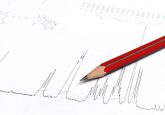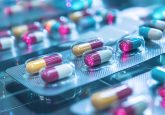Quantitatively analyzing saliva alcohol levels with a smartphone

A team of researchers from Purdue University (IN, USA) have developed a smartphone device and accompanying app, capable of quantitatively analyzing and storing the results of strip-based saliva tests for alcohol. The device is sensitive to saliva alcohol levels in the range of 0.02–0.30%, sufficient to determine if an individual should be operating a motor vehicle. The app also allows storage and recollection of the data. Their results were published recently in the journal Applied Optics.
Current saliva based methods for the analysis of alcohol levels rely on subjective color interpretation where the sample strip is matched against a color scale on its packaging. This can obviously lead to costly errors. Euiwon Bae, senior research scientist at Purdue University noted “It depends on your subjective interpretation of colors; we try to avoid that, so we made a system that can be easily integrated in a smartphone.”
The smartphone attachment itself is small, 25 × 12 × 12 mm, and consists of a plano-complex lens, mirror reflector and plastic diffuser to allow for consistent illumination via the phone’s LED. The sampling strips fit into a small chamber above the camera lens. The device attaches to a metal strip in the smartphones case with the use of a weak magnetic strip, and both the plastic casing and lens are relatively low in cost.
The dipstick test works by detecting the product of a chemical reaction. Ethyl alcohol reacts with alcohol oxidase to produce hydrogen peroxide, the hydrogen peroxide then mixes with the enzyme ABTS and is converted by peroxidase into a green colored complex. Darker complexes indicate higher ethanol contents.
The change in color is colorimetrically analyzed by a MATLAB program within the app that imports the images, cropping them to a 120 × 120 pixel centre area and examines them with Red–Green–Blue and Hue–Saturation–Value color schemes.
“With the app, you can record the digital image of your dipstick, calculate the concentration, date and time of the recording, and also geographical locations — everything is stored in the database of your phone. Practically speaking, if you are in the middle of a legal dispute, you have proof at your fingertips — when it was taken, where it was taken, what your concentration was, everything,” explaied Bae.
In the future, Bae and his colleagues intend on expanding the devices applications to food safety.
Sources: Measuring and saving saliva alcohol levels with a smartphone attachment; Y Jung, J Kim, O Awofeso, H Kim, F Regnier, E Bae. Smartphone-based colorimetric analysis for detection of saliva alcohol concentration. Applied Optics 54, 9189-9189 (2015).






